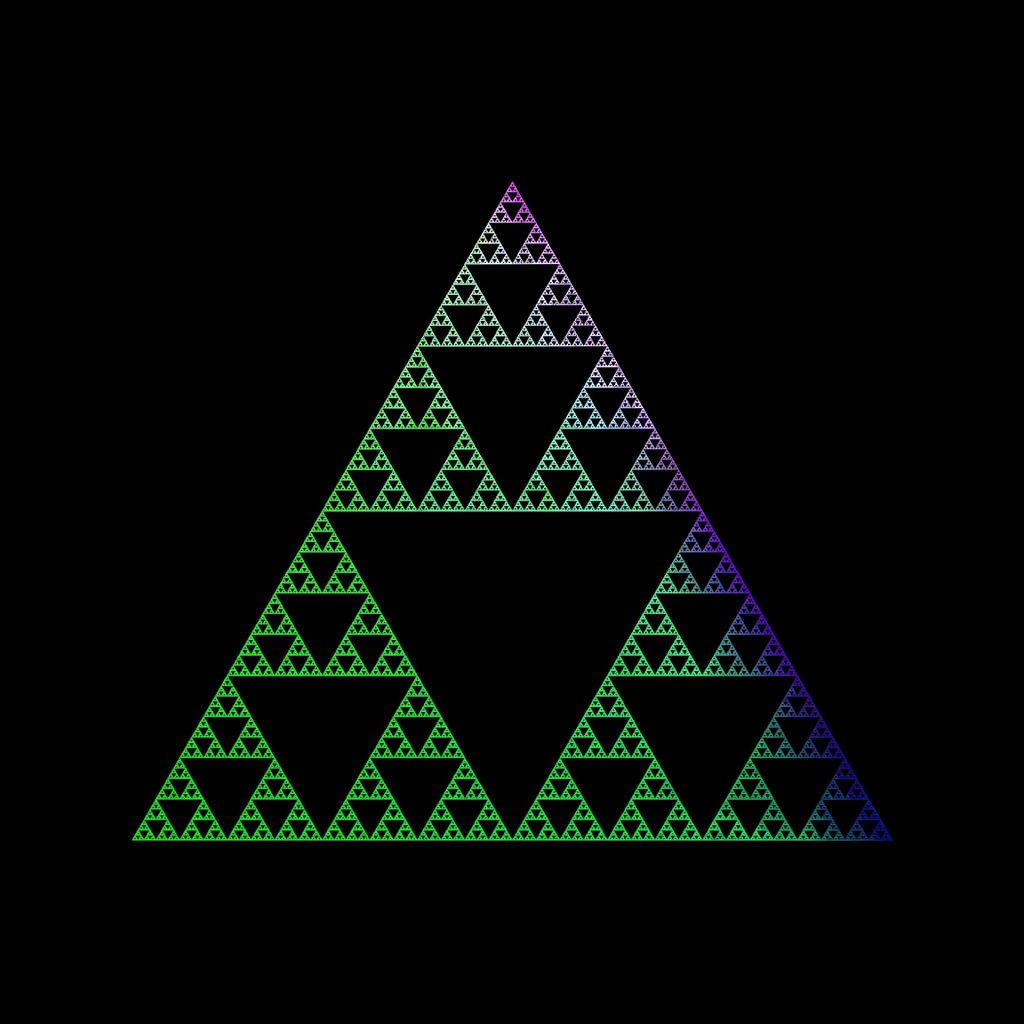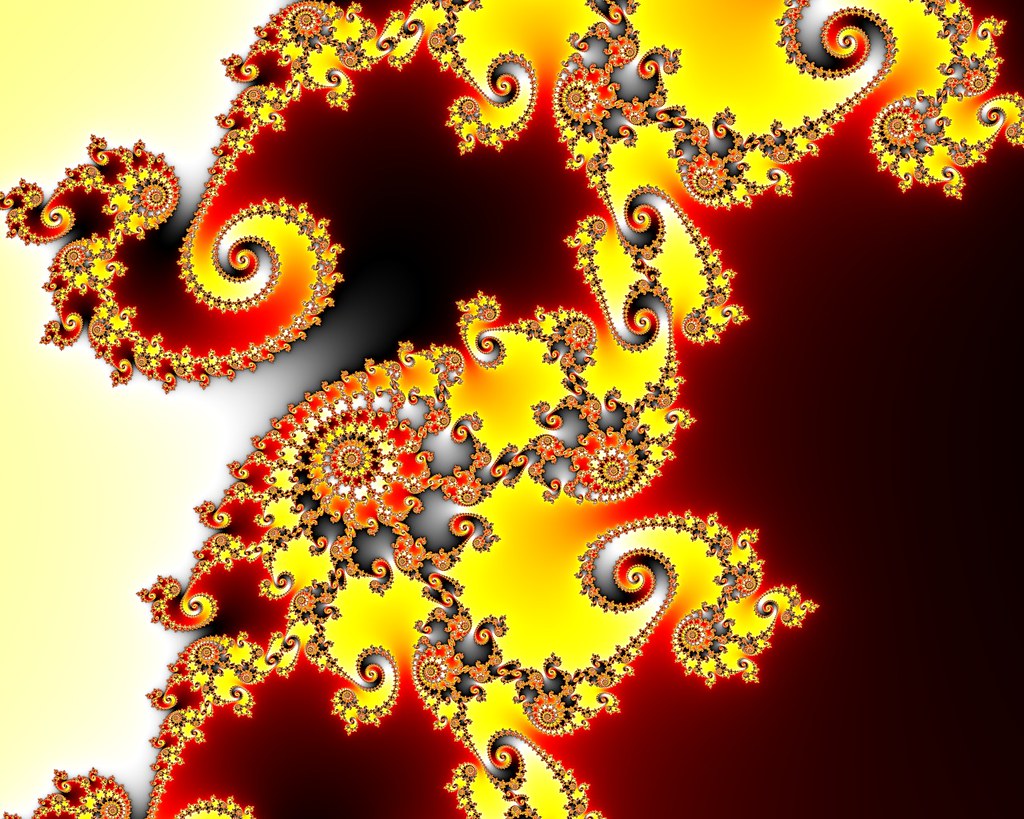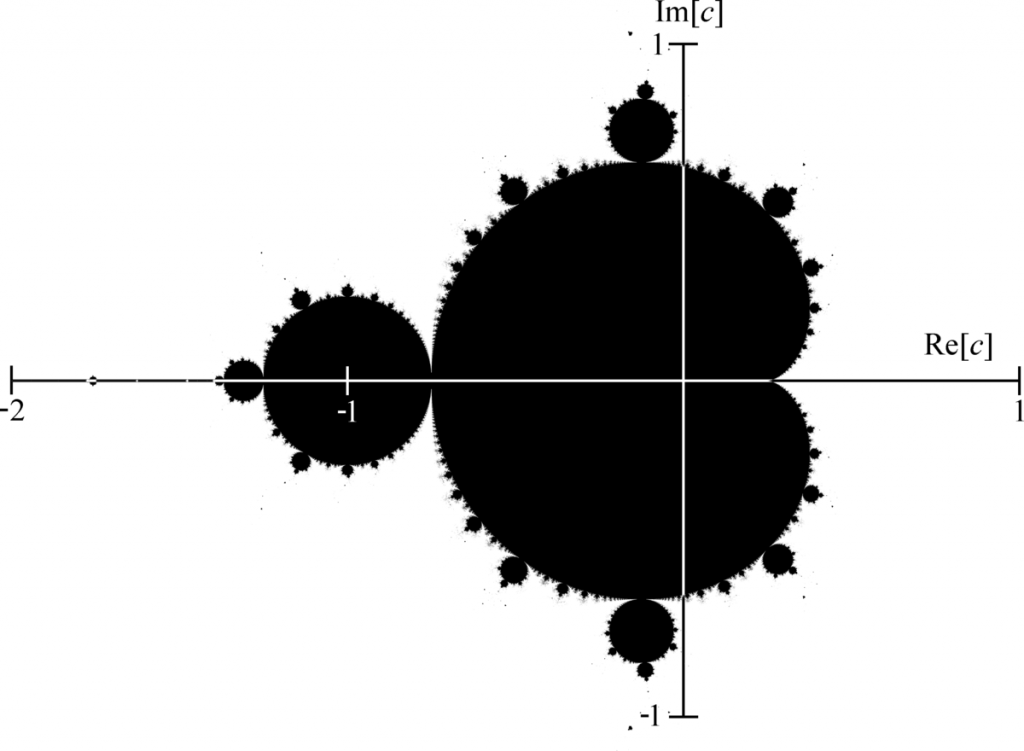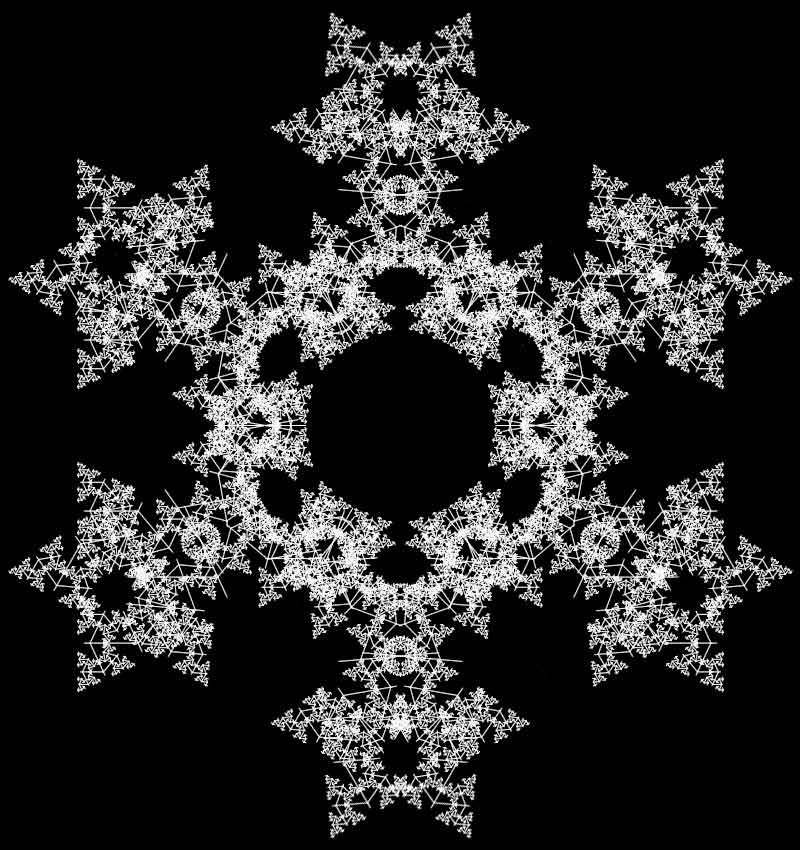
A fractal is an infinite pattern where each part is like the whole. For a more technical definition, see the Wikipedia page or here.
There are many different types of fractals, but here are a few examples:
Sierpinski Triangle

The Sierpinski Triangle is a triangle divided into four equal triangles. Each of those triangles is divided into four equal triangles themselves, and so on. The area is finite, but there are an infinite number of smaller triangles inside each big one.
Click here for more information on this awesome fractal.
Mandelbrot Set

For something a little more complex (get it?), let’s look at the Mandelbrot Set.
Basically, there’s something called imaginary numbers, which are representations of the square roots of negative numbers. I know, it’s impossible to take the square root of a negative number–but teachers in kindergarten also tell you that you can’t subtract a larger number from a smaller number. So, it turns out that you can in fact take the square root of a negative number, but the result will be an imaginary number. Imaginary numbers are usually talked about in terms of i, which is the square root of -1.
It’s also possible to combine imaginary numbers with real numbers. This is called a complex number. You plot complex numbers on a graph that looks like a normal plane for x and y, but instead of the x axis you have the real part of a number and instead of the y axis you have the imaginary part of the number. The Mandelbrot fractal is the set of all points that fit a certain definition:

When you zoom in and add color, it looks like the picture below the heading.
Check this out for a more thorough and technical explanation of the Mandelbrot Set.
Also, try this link for a fun Mandelbrot fractal generator. You can play around with the settings and zoom in to get the image you want. There’s also several images to look at if you don’t want to make your own.
Fractals in Nature

Fractals don’t just appear on mathematical graphs or theoretical shapes. They’re all around you, from the ferns in a forest to the snowflakes that fall from the sky. They are in the branches of trees that reach up towards the sun, and the veins that carry life through a leaf.
The world repeats itself, and fractals are present all throughout existence, if you only know where to look.

